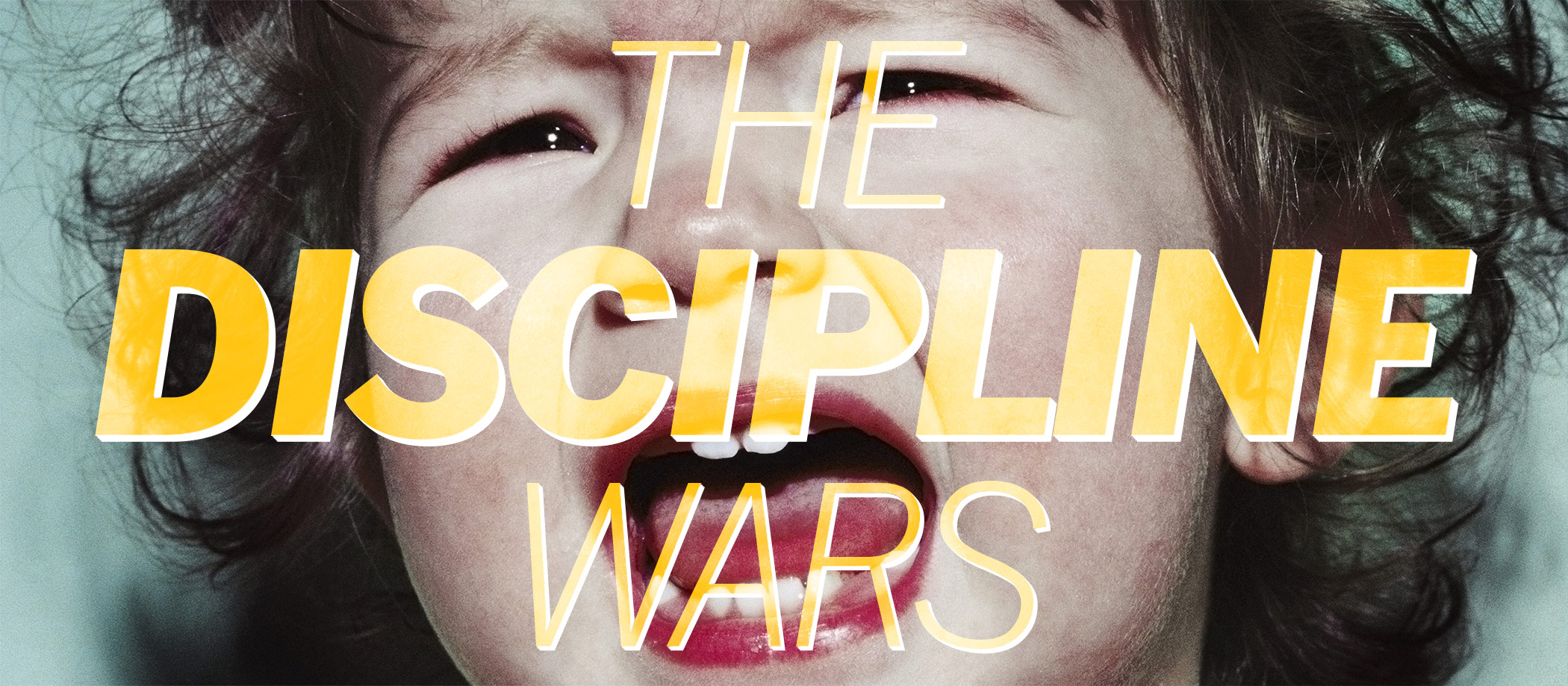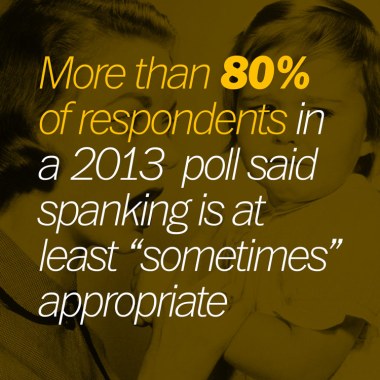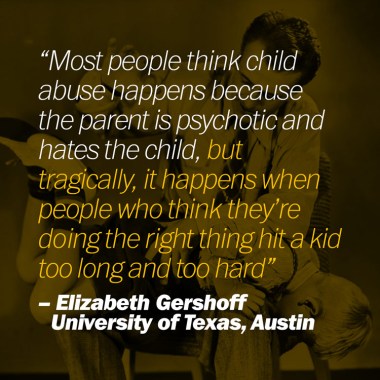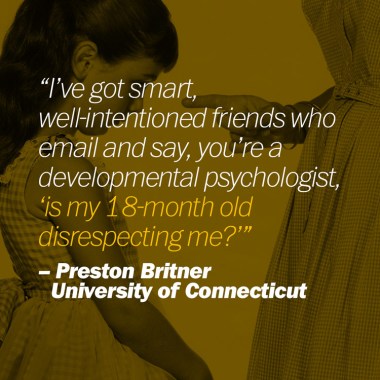 Minnesota Vikings star running back Adrian Peterson was indicted for negligent injury to a child after he whipped his 4-year-old son bloody with a slim tree branch in September as punishment for pushing one of his siblings. The football player, and many others, seemed surprised that police got involved in what seemed to him a family matter. “I am someone that disciplined his child and did not intend to cause him any injury,” Peterson said in a statement afterwards.
Minnesota Vikings star running back Adrian Peterson was indicted for negligent injury to a child after he whipped his 4-year-old son bloody with a slim tree branch in September as punishment for pushing one of his siblings. The football player, and many others, seemed surprised that police got involved in what seemed to him a family matter. “I am someone that disciplined his child and did not intend to cause him any injury,” Peterson said in a statement afterwards.
The incident turned up the heat under a simmering national argument about how to discipline children and about ethnic and regional differences in the use of corporal punishment. From conservative talk show host Sean Hannity to former basketball champion Charles Barkley, some leaped to Peterson’s defense, claiming that many parents discipline their children using switches. Others, including former NFL player Cris Carter and child development experts, argued that it is a tradition that should come to an end.
While much is made over a racial divide in the use of discipline-by-force, the truth is, in large numbers, Americans of nearly every type approve of some form of corporal punishment. They use it, they underwent it, and they don’t see any harm in it. America is a nation of spankers.
Yes, approval for spanking has dropped in the last 20 years, as the timeout has risen in popularity. But if you’re an American of any race other than Asian, odds are you were spanked as a child. In a 2013 Harris poll, 86% of the respondents said they’d been spanked—almost a quarter admitting that sometimes the punishment was “too violent.” And it’s also likely that you think spanking is an acceptable method of discipline for children. More than 8 in 10 of those question in the Harris poll said they thought it was appropriate at least “sometimes.”
The furor over the Peterson case reinforced some widely accepted myths, but it also raised important questions that are rarely asked outside scientific circles (and certainly not in many American homes): When does spanking become abuse? Is it harmful to children? Does it actually work to change behavior? And, most critically, is there any kind of discipline that works better?
(Chart: Americans’ attitudes to spanking; not as different as you’d think.)
“My job is not to tell people what to do, but to tell them what the research findings are, “ says Alan Kazdin, who has spent 30 years studying techniques that will tame children who set fires, punch their principals, and run away as well as kids whose rebellions are slightly less damaging.
And the research findings, says Kazdin, professor of Psychology and Child Psychiatry at Yale University and Director of the Yale Parenting Center, are overwhelming. Depending on how frequent and how aggressive, spanking can be destructive long before it becomes a clear cut case of child abuse.
In recent years, for example, studies have found that children who are spanked frequently have lower IQs, are more aggressive, and are more likely to abuse drugs and alcohol. In a University of California study, infants who were often spanked subsequently had higher spikes in the stress hormone cortisol when faced with a new experience, like being left with a stranger, compared to children who weren’t spanked. Studies show that spankings result in higher production of stress hormones, which can make children less able to deal with other stresses.
These findings have held up even when other common risk factors for these behaviors—such as poverty, ethnic background, and whether a child is temperamentally aggressive—are taken into account.
“Moderate to heavy spanking [twice a week or more] predicts later mental and physical health and academic problems,” says Kazdin. “It can change the immune system. Adults who as children were spanked regularly die at a younger age of cancer, heart disease, and respiratory illnesses. Spanking doesn’t change a child’s behavior, and even if it did, there are so many hazards to it that it’s still not an appropriate method of discipline.”
Though he works in a world—scientific research—that often cautiously hems and haws about its findings, Kazdin is definitive on this point, just as a group of Canadian researchers were when they issued their 2012 report on 20 years of corporal punishment research, published in the Canadian Medical Association Journal: “No study has found physical punishment to have a long-term positive effect and most studies have found negative effects.”
If studies of any other phenomenon had such consistent scientific results, they’d be adopted wholesale. “If it were a diet pill, everyone would be taking it,” says Elizabeth Gershoff, associate professor or human development and family sciences at the University of Texas at Austin, who studies how discipline affects children’s development. “But Americans don’t trust research when it comes to parenting and family life. We don’t like to be told how to run our families.”
One salient example of how resistant Americans are to what they perceive as government interference in family matters is the opposition of the U.S. Congress to ratifying a 1989 UN treaty on the rights of children, one of the most rapidly and widely adopted human rights pacts ever. It bans child exploitation and sets up protections for children from physical and mental violence. The U.S. signed the treaty, which indicates an endorsement of its principles, but by failing to ratify it, rejects it as legally binding. The only other nation that hasn’t ratified the treaty is Somalia, a fact that President Barack Obama has called “embarrassing.”
The opposition to the treaty comes mainly from groups who assert that because it requires U.S. laws to fall into lockstep with the principles of the document, it will usurp American sovereignty and the rights of parents to choose their religious training, prevent their daughters from having abortions or discipline their children as they see fit.
Supporters argue that the treaty actually reinforces the rights of parents and guardians by recognizing them as paramount, except in cases where the child is in danger. However, the opposition is probably right about one thing: under its terms spanking could be outlawed. At least 45 nations have instituted a ban on hitting children and more than 100 have outlawed corporal punishment in schools. [See Map] In the U.S., 19 states still permit the use of corporal punishment in schools, but it may be on its way out. An ABCNEWS poll in November found that even parents who approve of spanking in the home oppose it in schools.
What the surveys generally don’t pick up is the most common response that researchers get when they talk to people about their discipline practices. “What you hear is, I was spanked and I turned out O.K.,” says Preston Britner, professor in the department of human development and family studies at the University of Connecticut and co-chair of the American Psychological Association’s (APA) Committee on Children Youth and Families. “In the United States we have a violent culture, so clearly we all didn’t turn out O.K.”
That not everyone is “O.K.” is something Marion Brannon sees every time she conducts parenting classes based on a program developed by the APA called Adults and Children Together (ACT/Parents Raising Safe Kids), which teaches parents how to provide their kids a safe environment and to protect them from violence—in the community, in the media, and at home.
“We do a very reflective exercise in which people talk about their own parenting styles,” says Brannon, who works with families in Ohio. Seminal research by psychologist Diana Baumrind in the early 1960s, identified four major types of parenting style: very rigid or authoritarian, in which children are expected to follow strict rules in a “because I said so” way; authoritative, in which parents are firm but loving and responsive; permissive, or indulgent parenting, which places few demands on children but is nurturing; and uninvolved, in which parents makes no demands on children but are not supportive or communicative.
“We ask people to walk to the part of the room designated for each of those parenting styles, and there are a lot of defining moments. Tears. Anger. People start recognizing that the decision to hit their child isn’t even a choice—it’s something ingrained in them. And when we ask people who experienced a lot of physical punishment how it made them feel and if it worked, they usually say it made them angry, forced them to lie, to hide things. And they always say the same thing: ‘I don’t want that for my kids. Give me something else to do.’”
Studies suggest that one parenting style—authoritative—is more likely to produce kids who grow up happy and successful. Children of permissive or uninvolved parents generally have more trouble with self-control, have lower self-esteem, and don’t do as well in school or life. In general, rigidly strict parents produce children who are obedient and do well, but have low self-esteem and are more likely to be unhappy.
Some experts do argue for the reasonable use of a mild form of spanking to enforce other, nonphysical methods of discipline, such as time-out.
“The only way to use spanking that has been shown to produce better outcomes in children than almost every alternative is conditional or back-up spanking, which is non-abusive, and should be used in children from 2 to 6 years old who respond defiantly to their parents’ attempts to use milder tactics,” says Robert E. Larzalere, professor of parenting and methodology research at Oklahoma State University, who has worked with Baumrind on several studies.
Conditional spanking, says Larzalere, consists of “a two-swat spank” on a child’s bottom if he or she refuses to cooperate with a timeout, which involves sitting on a special chair or step for a few minutes to “cool down.” The idea, says Larzalere, who was once director of residential research at Father Flanagan’s Boys Home in Nebraska, is that by using physical punishment for defiance, the time-out chair becomes a more effective disciplinary tools since the child is more likely to start cooperating and the physical punishment can be phased out.
That type of spanking, he points out, is far different from the “frequent” and sometimes violent spankings that research finds are harmful.
But are “conditional” spankings what happen in the real world? Ethically, it’s not possible to conduct randomized controlled studies on spanking, and short of installing hidden cameras in American homes—which is illegal—it’s not easy to figure out what’s really happening behind closed doors.
The one researcher who has come close, George Holden and his colleagues at Southern Methodist University (SMU) in Dallas, found a way to legally eavesdrop on a group of 33 mothers and their children by strapping audio recorders to the mother’s arms and listening in for six nights as they interacted. Most of the mothers were white, and demographically speaking, all over the map, from lower income to upper middle class and higher.
The researchers were surprised—and, Holden admits, dismayed—to find that spankings were administered far more often than most parents admit and for petty infractions (one child was slapped for turning the pages of a storybook, another for sucking his fingers). They were also done with little warning—an average of 30 seconds after the child was told to stop a behavior. And the mothers weren’t calm and intentional in their discipline either. They struck out in anger and frustration. One mother hit her seven-month-old. Another hit her toddler to remind the child “not to hit your mother.” One hit her 3-year-old 11 times for fighting with his sister.
In prior studies, parents of 2-year-olds have reported that they spank or slap their toddlers an average of 18 times a year. Based on the six days of Holden’s study, published in April 2014, these mothers would be spanking their children 18 times a week.
“These incidents provide a peek into how a disciplinary incident could escalate whereby a young child could be inadvertently injured while being punished or a repeatedly distressed child could be emotionally affected,” the SMU researchers wrote.
The Holden study was small, but the idea that a spanking can escalate into abuse isn’t far-fetched. Canadian research on child abuse reports found that 75% of the time, the abuse took place when a child was being physically punished. Children who were spanked by their parents were seven times more likely to be severely assaulted (punched or kicked) than children who weren’t spanked. An American study found that infants who were spanked (about 30% of mothers in one study said they spanked their babies) were 2.3 times more likely to be injured enough to require medical attention than babies who weren’t hit. And there are a shocking number of “line crossers,” says Kazdin.
“Most people think child abuse happens because the parent is psychotic and hates the child, but tragically, it happens when people who think they’re doing the right thing hit a kid too long and too hard, sometimes with an object, as in the Adrian Peterson case,” says the University of Texas’s Gershoff.
Even the most well-meaning parents, who may be dealing with financial worries, work stress, or are exhausted by a long commute at the end of the day, “lose sight of the long-term goals of disciplining children and focus on the immediate context goals, which are more parent-oriented,” says Holden. “They just want the behavior to stop. It’s amazing how often this happens. When you’re having all these conflicts you get worn down and tired of it, it’s easy to lash out.”
The other problem is that parents are unwittingly modeling the very kind of behavior they want to quash in their children. Not only are kids who are hit more likely to hit, they may experience lasting brain changes if hit hard or frequently, that can affect their mental health and IQ. “It was clear from the tapes that these children were experiencing trauma—mini-trauma, not life or death,” says Holden. “If it happens enough, it can result in neurological changes in the brain caused by stress hormones.”
A 2009 study published in the journal Neuroimage found that harsh spankings—more than 12 a year, with an implement such as a belt or paddle—led to shrinkage of gray matter in areas of the brain linked to addiction, depression, and mental health disorders in a group of 23 young adults. Another study from the University of New Hampshire, presented at a conference on violence, abuse, and trauma in 2009, found that children who were spanked had lower IQs than children who weren’t spanked—and the more spankings, the older the child, the steeper the drop in intelligence. Both studies controlled for variables such as parental wealth, education, stress, temperament, and even ADHD.
“Parents don’t consider, ‘what is this doing to my child’s body and brain?’” says Holden, who found out in his most recent study, published in May 2014 in the journal Child Abuse and Neglect, that when parents (and nonparents) are given just a little information on these and other potential dangers of spanking, they start to change their minds. In that study, 118 nonparents and 520 parents were given summaries of the research on spanking to read. Afterwards, many weren’t as likely to feel as positive about spanking as they had been. “There begins to be a shift in their attitudes,” Holden says. “Not a dramatic shift. Not people saying ‘I’ll never do it again.’ But you can at least get a foot in the door.”
Like Larzalere, Holden says that an occasional mild spanking probably won’t result in lasting harm, but it also won’t result in lasting benefit. In his eavesdropping study, the kids who were spanked were acting up again in an average of 10 minutes. While some studies have found that spanking increases immediate compliance, there’s not a lot of evidence that it changes long-term behavior.
For one thing, it teaches children what’s wrong, but not what’s right, says Kazdin. The feedback from spanking—tears and remorse—is often misinterpreted by parents. “You wind up in what I call the punishment trap. You think it works because it stops the behavior in an instant, so it maintains hitting or shouting in your repertoire, but over the next days, weeks, and months, there’s no change in the rate of the behavior.” That encourages the spankings and other punishment to escalate. “Even when you ask parents who abuse their children, as I have, whether it’s working, they say no,” says Kazdin.
Holden likes to quotes the late child development expert, Haim Ginnott: “When a child hits a child, we call it aggression. When a child hits an adult, we call it hostility. When an adult hits an adult, we call it assault. When an adult hits a child, we call it discipline.”
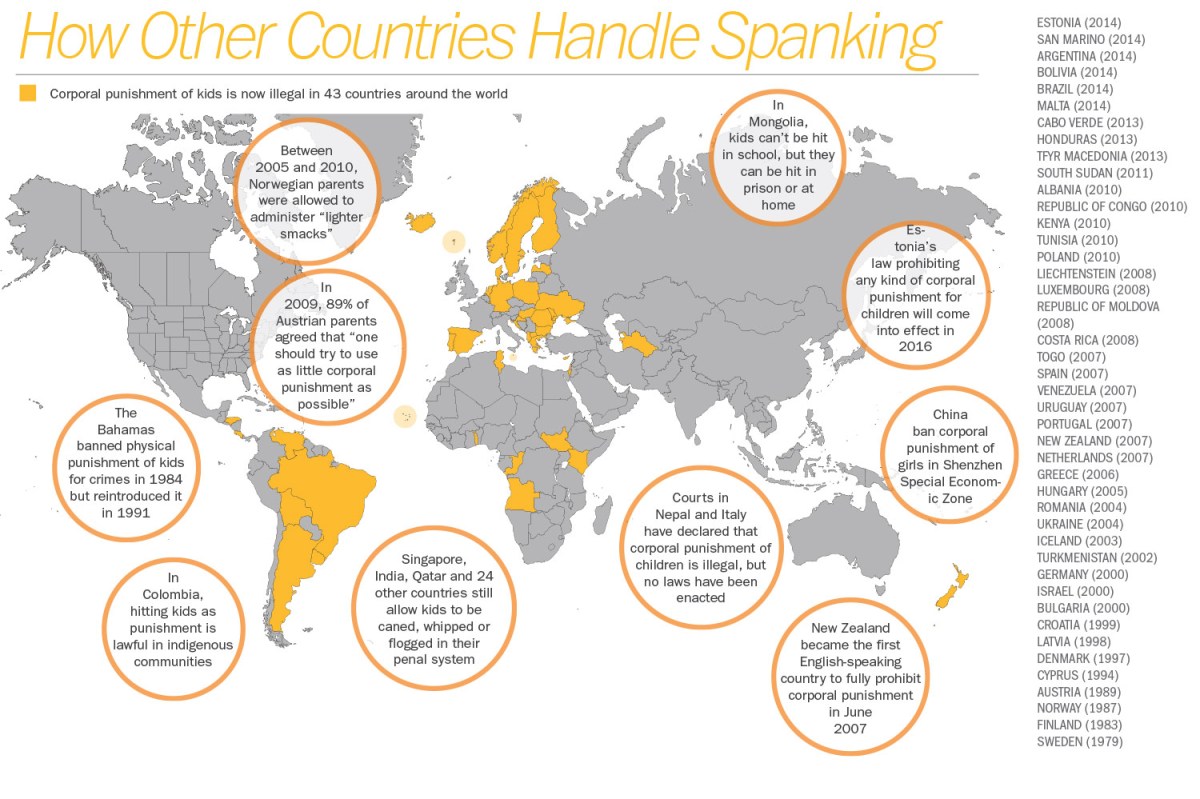
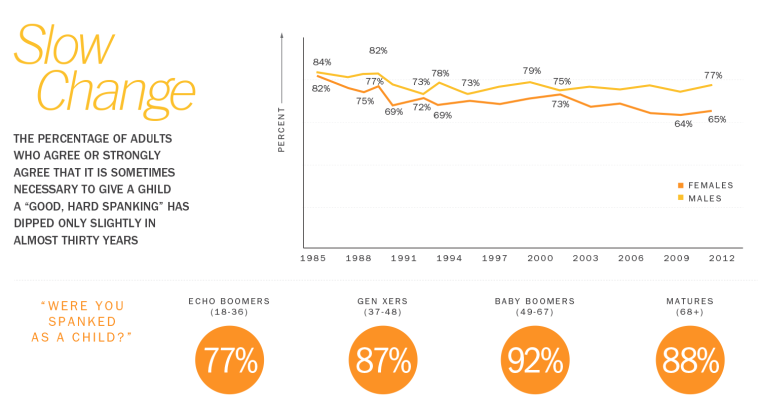
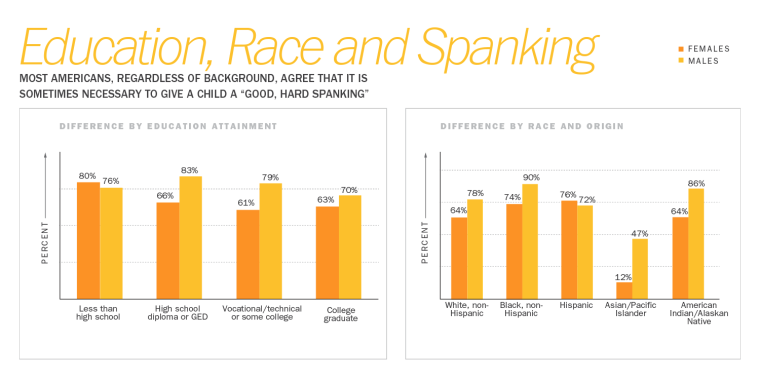
 If spanking is unlikely to change your kids’ behavior, what does work?
If spanking is unlikely to change your kids’ behavior, what does work?
Most child development experts today espouse some version of “positive discipline,” based on the work of Viennese psychiatrist Alfred Adler and his American counterpart Rudolf Driekurs and made popular more than 30 years ago by Jane Nelson, a child development expert and therapist—and, saliently, the mother of seven children. Her best-selling book, Positive Discipline, which uses the innate need for belonging and connection to encourage children in a nonpermissive, nonpunitive and respectful way to cooperate, is now considered a classic by many child development experts as a classic, though its most recent reissue says that there are only 700,000 copies in print. In the great universe of parents and parenting books, that’s a virtual drop in the bucket.
Still, elements of that book provide the framework for successful programs, such as Kazdin’s Parenting Center and Child Conduct Clinic at Yale (as well as his books, including The Kazdin Method for Parenting Defiant Children). These programs espouse a kind of “catch them being good” philosophy toward discipline, exchanging punishment for teaching.
Here’s what child development experts recommend parents try instead of spanking:
Catch kids being good and reward it. Instead of focusing attention on curbing the bad behavior—which can be a reward for the behavior—Kazdin teaches parents to notice and high-five good behaviors. So, for example, instead of yelling at the kids for fighting over what cartoon they’re going to watch on Saturday morning, praise them when they’re sitting quietly watching a show together. Do likewise when, say, a green-bean-hating toddler takes a little nibble of a vegetable on his plate or a teenager is being civil at the breakfast table.
“When you’re talking to your teenager, you don’t want to be effusive. Say ‘it’s really nice sitting down with you for breakfast,’ not what you want to say, which is ‘it’s so nice you’re not being the creep you usually are,’ which most parents can’t resist, ” says Kazdin, whose teaching style is laced with humor.
He’s not a big advocate of trying to reason with a young child as a primary means of shaping behavior. “Reasoning helps build IQ, but it doesn’t change behavior” as effectively as creating opportunities for children’s good behavior to take center stage, he says.
Practice good behavior repeatedly. Kazdin takes a page from airline pilot training. “Pilots spend hours in a flight simulator in the hope that, if something does go wrong, like the plane that had to land in the Hudson, that practice kicks in,” he says. So he advocates taking time to help children play-practice the good behaviors you want to see, like going to bed without a fuss. And then there’s what he calls the “good tantrum.”
“If your child has horrible tantrums that go on for 45 minutes during which he hits, swears, and throws things, how do you change that?,” he says. “You play the tantrum game.” This is, quite literally a game, preferably one you play when a child is on an even keel. “You tell the child that there are things he can’t do. ‘You can’t throw things and you can’t hit mommy and you don’t scream. If you can have a good tantrum where you don’t do any of these things, you get points, and with those points you can earn a reward.’ ” Once the child has thrown a good tantrum, he or she should be praised, counterintuitive as that sounds. “If he does it well, smile and praise—make it effusive—and say, ‘you did this or that and it was great,’ then touch the child in an affectionate way. By doing it this way,” says Kazdin, “you increase the likelihood of your child changing his behavior.”
These techniques, he says, have worked for the defiant and even violent children he sees at his clinic, “kids who would turn Mother Teresa into an abusive parent. So with normal children, it’s a piece of cake.”
Use age-appropriate discipline. Most parents know when their children should roll over, sit up, and start crawling, but far fewer understand how a child’s cognitive processes develop so they’re often at sea about when and how to discipline. Many have unrealistic expectations of their children.
“I’ve got smart, well-intentioned friends who email and say, you’re a developmental psychologist, ‘is my 18-month old disrespecting me?’ No, your child isn’t cognitively able to do that. But not everyone is sitting around with Google Scholar reading up on the literature” says the University of Connecticut’s Britner. “We should have universal parenting classes in the weeks ahead of birth. My wife and I went to childbirth classes for six weeks straight. They taught us to breathe and push and that was it. Then it was ‘Good luck for the next 18 years.’”
Most parenting books have a chapter on how a child’s mind works at various ages and stages. For example, there’s really no need to “punish” babies. Distraction works—taking the TV remote away and replacing it with an Elmo toy, for example, or dancing and singing to the soundtrack from Frozen to entertain them out of a cry. A baby who can’t comprehend that things exist if they can’t see them—hence separation anxiety—isn’t going to absorb many lessons beyond what they learn from their here-and-now experiences: What falls on the floor stays there. It’s still Mommy behind the peek-a-boo hands. I want this but, O.K., I’ll take the other thing you’re distracting me with. You love me. I love you. Let’s never be apart.
Once toddlerhood and talking take over, parents get confused, says Clare Lerner, a clinician specializing in child development and parenting and director of parenting resources at Zero To Three, National Center for Infants, Toddlers, and Families in Washington, DC. “They start to misinterpret normal toddler behavior as malicious, disrespectful and misbehavior,” she says. “Parents say to me all the time, ‘He knows not to do that. He even tells me what he’s doing in wrong.’ But the truth is, even if they may have the cognitive understanding that something is wrong to do, they simply don’t have the impulse control to stop themselves.”
This is when the job of parenting becomes teaching children to make good choices and to “manage the frustration of not getting everything they want,” says Lerner.
Setting boundaries, giving children limited choices, and sticking to principles even if it results in an unhappy child for a few minutes are well-tested techniques Lerner teaches. For example, she recalls one sharp 3-year-old named Amanda, who resisted her parents’ efforts to put her to bed every night. Like clockwork, she’d need to use the bathroom, want a drink, and something to eat, and was so persistent that her parents eventually gave in. Then one night Amanda told her father, “Daddy, I want to let you know that when you put me to bed tonight, I’m going to be really hungry.”
“They thought she was playing them and she was, but you have to give her credit—she was finding her way in the world,” says Lerner, laughing. “Kids are little strategists and she found a strategy that worked for her.”
Then, so did her parents. “They could have smacked her and told her to go to sleep and she would out of fear, but she wouldn’t learn how to handle her emotions in a good way,” says Lerner. Instead, her parents created bedtime rules: snacks, potty, and books come before lights out, and once lights were out, that was it. “They gave her a choice. They told her, if you’re hungry, you can choose to have your snack right before bed, but if you don’t have it then, the next time you eat will be at breakfast,” recalls Lerner. When Amanda realized her previous strategy stopped working, she stopped using it. It took one night, during which she was miserable.
“The most important thing they did was let her be unhappy,” says Lerner. “If you’re waiting around for your child to like everything and always be happy, you’re never going to have a happy child. Part of growing up is learning to accept that you can’t have everything you want, but you’re still going to be O.K.”
Giving toddlers, who are grasping for some independence, some limited choices allows them to have at least a small say in what they do, she says: “Say, You can brush your teeth or I’ll brush your teeth. Your choice. You can climb into the stroller or I’ll put you in the stroller. Your choice. You’re setting the rules, but there’s always a choice.”
Toddlers and older children respond to time-outs, particularly when they’re upset. “Set a timer for two to three minutes and be encouraging to the child: ‘I know you’re going to do a great job of pulling yourself together,’” Lerner says.
And distraction works just as well with children from 2 to 6 years old as it does with babies. If, for example, parents are enforcing the one-hour TV rule (pick a favorite show, the TV goes off when it’s over) there’s bound to be some pushback, she says. “Give the child a few warnings like ‘the TV goes off in five minutes’ and if when you turn the TV off and the child flops on the floor and turns into a 60-lb. wet noodle, just say, ‘I know you hate it when I turn off the TV, but you need to pull yourself together. Do you want to help me with lunch or do a puzzle?”
If that sounds like coddling, it’s not. Lerner says. “Coddling is turning the TV back on. Everything after the TV goes off is learning to cope with frustration. Even when you’re an adult, part of coping is finding something else to do.”
For school-age children and teens, grounding or withholding privileges—like using the computer, watching TV, or taking the car—helps reinforce the rules and “helps them recognize that you’re serious about their behavior,” says Southern Methodist’s Holden.
“With your 15-year-old, you want to make it clear what the deal is on the rules, and if they screw up, you take away the smartphone,” says Britner.
Don’t let your brain dial 911. In a perfect world, parents would all be at their best selves and in a completely rational frame of mind when discipline-worthy incidents arose. Or they might pause to consider whether it’s kids’ behavior or something else that is getting to them. And just as children churn out stress hormones when they’re punished, so do parents when they’re frazzled, angry, annoyed and doing the punishing.
“When we see misbehavior as a state of emergency, our bodies produce cortisol and adrenaline,” says Laura Markham, author of Peaceful Parent, Happy Kids: How to Stop Yelling and Start Connecting and founding editor of AhaParenting.org. “We have three choices, fight, flight or freeze. When it happens to kids, they may run away from you or fight, get defiant. We may be trying to teach them a lesson, but when this is going on in their bodies, they can’t learn. They freeze.” The parts of the brain that govern learning are shut down by stress.
Likewise, when parents get overwrought they may come at the child “with sirens blaring” and throw what Markham calls “a mommy and daddy tantrum: screaming, yelling, stamping feet and hitting.” The same fight, flight, or freeze chemicals are taking over in them too and the situation can quickly get out of hand.
Time to act age-appropriately, says Markham. “We know that the frontal cortex [the part of the brain that governs executive functions such as impulse control] is less complete in children and teens. In fact, it doesn’t become complete until we’re about 25. We know that 4-year olds are not able to control themselves when they’re in fight, flight, or freeze, but as parents we have the power to take a deep breath and know that we have a choice—to turn a storm into a tsunami, or calm it down.”
When disciplined by someone in a calm state of mind, says Markham, a child remains open to what is said, but more importantly, to what is done. “Make yourself clear: Say, ‘whoa, whoa, whoa, you’re not allowed to yell at me or hit me. You’re not allowed to run around the restaurant or take your brother’s toy. You’re not allowed to run into the street.’ But calm yourself so that you can regulate your emotions, which will show your child how to regulate his. They learn to calm down not because you tell them to, because they’ve seen you do it. Not only will they better able to handle their own emotions in the future, they’ll be less likely to act out,” says Markham.
That’s where the parent timeout comes in. What works for kids also helps parents, says Britner. “Take yourself out of the picture too, until you’re calm enough to respond without anger,” he advises.
This is especially helpful when dealing with teens, who may meet even the most reasonable demands with lots of sighing and eye-rolling. “That’s the time when kids all think their parents have cooties or, I guess today that would be Ebola,” says Kazdin. “It’s hard to take.” But, he says, don’t lose your cool.
Parents often ask SMU’s Holden for the magic solution to getting their kids to stop doing what is wrong or harmful, that shows they’re serious, but doesn’t hurt the kids. “I tell them, the only ‘magic’ is letting the child grow up, letting their brains develop and helping them gradually learn cooperation and reciprocity,” he says. “And while that process is happening, don’t do anything to damage them.”
—All Photographs by Getty Images
